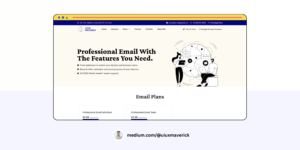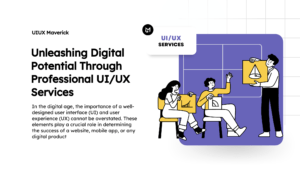Discover the simple steps to kickstart your own internet business and improve your online marketing plan for selling products.
Thanks to the influence of digital marketing and online marketplaces, almost anyone can launch and expand a thriving e-commerce business in 2024. With retail e-commerce sales projected to hit around $8.1 trillion by 2026, now is an ideal time to kickstart your own venture.
What is an ecommerce business?
An e-commerce business is a business model that enables entrepreneurs to sell products and services through online platforms, without needing a physical store. E-commerce businesses vary in size, from small independent startups to large corporate enterprises. They can operate as business-to-business (B2B) entities, catering to other businesses, or as business-to-consumer (B2C) entities, serving individual customers.
Examples of B2B products and services include:
- Software-as-a-service (SaaS)
- Subscriptions
- Parts for other businesses to use
- Consultants
Examples of B2C products and services include:
- Jewellery
- Clothing
- Beauty supplies
- Health and Fitness
We’ve crafted a step-by-step guide to assist you in launching your e-commerce business and enhancing your e-commerce marketing strategies.
Step 1: Explore and Develop Your E-commerce Business Concept
A successful business begins with a solid idea, whether you’re operating online or in a traditional store. Given the accessibility of countless digital products, your product idea must be well-crafted and memorable.
A noteworthy e-commerce business idea — one that not only brings you profit but also aligns with your interests — possesses two key qualities:
- Demonstrated market demand
- Something you’re passionate about
For many small business owners, personal and professional lives often intertwine. If you’re dedicating a significant amount of time to your e-commerce business, it’s crucial to enjoy working with your target market and care about the products you’re offering.
If you’re uncertain about the products for your new business, consider our list of the 10 best e-commerce product ideas (I will add the list soon). Explore Google Trends and stay open to inspiration in your daily life.
Zachary Murray, the founder of Nomadic Fabrics, shares his experience, “When I started Nomadic Fabrics, I observed trends around me. At a yoga festival, I noticed a long line at a vendor selling Turkish towels. Witnessing the demand firsthand motivated me, especially since there were limited options on Amazon at that time, leading to the launch of Nomadic Fabrics.”
Once you’ve identified the products you want to sell and feel content with them, brainstorm a business name that reflects your e-commerce brand’s mission. A good brand name should be memorable and relevant to your offerings. Then, it’s time to draft a business plan.
Step 2: Choose Between Sourcing and Developing Products
The decision between developing and stocking your products versus sourcing them through dropshipping is a crucial one. Before making this choice, it’s essential to have a deep understanding of your customer base and the competition. This knowledge will guide you in determining what makes the most financial and strategic sense for your e-commerce business.
Dropshipping
Sourcing existing items from manufacturers and suppliers is often quicker and more cost-effective in the short term. This e-commerce business model involves lower upfront costs, making it a popular choice for starting a business in 2024.
When collaborating with a dropshipping supplier or print-on-demand company, ensure to verify their business licenses, as well as any applicable taxes and shipping costs based on the location. When executed correctly, drop shipping can boost profit margins. Explore our e-commerce dropshipping article for additional tips and tools.
Zachary Murray, reflecting on his experience, notes, “As with any bootstrapped business, cash flow was a significant constraint in the beginning. We relied on a local dropshipping model to allow us to invest in marketing rather than tying up funds in inventory.”
Consider dropshipping if:
- You have limited upfront capital.
- It aligns with the products you’re selling.
- Many of your competitors also source their products this way.
Developing
Creating something unique can provide a competitive edge, offering long-term benefits. One significant advantage of developing and managing your inventory is the control it gives you over shipping and quality. This control helps prevent dissatisfaction among new customers in case of any issues with a supplier.
While the prospect of developing products for your ecommerce business might seem daunting, you can enlist the assistance of freelance product designers. They can help with everything from conceptualization to 3D design and manufacturing.
Jennifer Stalley, founder and president of Meemzy Magic, a sensory kit toy company, shares her perspective, “I came across the most adorable ready-made toys that were ready to ship. However, when I started my company, I committed to be as sustainable as possible. In a world where anyone can start dropshipping tomorrow, I swam against the stream, crafting beautiful, heirloom-quality, sustainable toys from scratch.”
Consider developing if:
- You have a higher upfront capital.
- You want control over shipping and quality.
- You aim to distinguish yourself from competitors in the market.
3. Set Up Your Online Store
Creating an appealing e-commerce website starts with choosing the right platform. While it’s possible to build one on your own, utilizing one of the available e-commerce platforms is recommended.
Fintan Meagher, founder of KPop Warehouse and content marketer at ReConvert, recommends Shopify for its user-friendliness, affordability, and conversion-focused free themes and checkout flow. Shopify also offers excellent scalability, ensuring no capacity issues as your store grows.
Various ecommerce platforms are available, ranging from basic hosting services to those with advanced features. When selecting a platform, consider factors like pricing, scalability, ease of use, features, and security.
Hire An Expert Ecommerce Website Developer Here.
Popular ecommerce platforms include:
- Shopify
- WooCommerce
- Wix
- BigCommerce
- Adobe Commerce (formerly Magento)
These platforms often provide customizable themes, allowing you to personalize your online store without any coding knowledge. Optimize your product pages with clear descriptions and high-quality images, and ensure your domain name reflects your brand and products.
Before launching your ecommerce store, thoroughly test its functionality:
- Confirm correct product displays
- Test payment processing with different methods
- Ensure fast site speed to avoid SEO penalties
- Verify functionality of customer support channels, including chatbots
- Test cart functionality without glitches
Consider expanding your product distribution through online retailers like Etsy, Amazon, and eBay for increased visibility.
4. Promote and Market Your Ecommerce Business
By now, you should understand your target audience and create detailed customer profiles to shape your marketing strategy. Tailor your marketing efforts to channels that align with your consumer base.
Content Marketing
Differentiate yourself with creative and original content. Use various channels for content creation and marketing:
- Social media content on platforms like Facebook, LinkedIn, TikTok, or Instagram
- YouTube videos for additional income through monetization
- Blog posts for engagement and education — freelancers or AI tools can assist
Leverage email marketing with automated emails for product launches, seasonal discounts, or cart abandonment.
Influencer Marketing
Harness the power of influencers to build credibility and reach potential customers. Partner with relevant influencers, ensuring their credibility with freelancer-assisted research.
Dan Troha, CEO and founder of Softball Ace, notes the importance of AI search analytics for influencer selection, streamlining the process.
Invest time in SEO to enhance organic visibility:
- Conduct keyword research
- Incorporate relevant keywords into page titles
- Craft unique metadata descriptions
- Create quality content while avoiding keyword stuffing
5. Optimize Your Ecommerce Business for Success.
Running a small business can feel like a never-ending task. To ensure the success and eventual scalability of your ecommerce business, invest in optimization tools and strategies, utilizing both AI and freelancers.
AI Tools
Embrace various AI tools to automate daily tasks:
- Utilize AI video editors for polished marketing videos
- Leverage AI content creation tools for a robust social media strategy
- Boost coding productivity with AI coding tools
- Generate quality images for branding using AI prompt ideas
If you’re unsure about implementing AI or lack the time to learn, consider hiring an AI freelancer to handle the work for you. Explore additional AI use cases for small business owners for more insights.
Running a successful ecommerce business doesn’t require you to be a master of all trades or manage a large team. Working with freelancers allows you to delegate specific tasks without the commitment of full-time employees.
Join Fiverr to access a marketplace of skilled freelancers capable of handling various tasks, from creating a social media marketing strategy to conducting market research or crafting website content.
Disclaimer: This post includes Fiverr affiliate links, Hostigner affiliate links and Shopify affiliate links. If you purchase through these links, I may earn a commission at no additional cost to you. Your support helps keep my content free and insightful.







